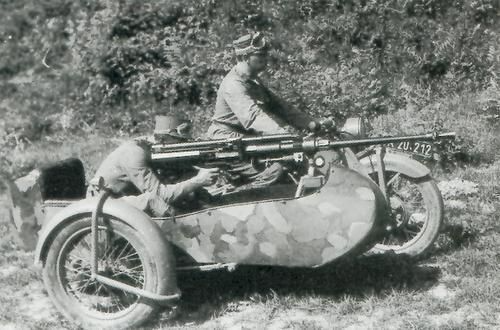
The BMW R 11, a series of motorcycles produced by the renowned Bavarian Motor Works (BMW), holds a unique place in both automotive and military history.
Developed and produced in the interwar period, the R 11 series was not only a civilian success but also found its way into various military applications, notably during a period marked by global political instability and the impending onset of World War II.
BMW, initially renowned for its aircraft engines, had ventured into motorcycle production in the early 1920s.
By the time the R 11 was introduced in 1929, BMW had already established a reputation for engineering excellence. The R 11, with its advanced design and reliable performance, came at a time when nations were modernizing their military forces, including motorized units.
Design and Features Suited for Military Use

The BMW R 11 was designed as a robust, reliable, and efficient motorcycle, characteristics that made it suitable for military applications. Its 745cc side-valve, boxer twin engine was known for its durability and ease of maintenance, essential traits for military vehicles.
The use of a pressed-steel frame, innovative at the time, provided the R 11 with a sturdy structure, capable of withstanding the rigors of military use.
Additionally, the motorcycle’s shaft drive system was a significant advantage. Unlike chain-driven motorcycles, which required frequent maintenance and were prone to malfunctions in harsh conditions, the shaft drive of the R 11 was more reliable and required less upkeep, a crucial factor in military 0perations.

The BMW R 11’s military potential was recognized in the early 1930s. Its initial adoption by military forces was driven by its proven performance and the growing need for motorized reconnaissance and communication units. The motorcycle’s ability to navigate a variety of terrains, coupled with its reliability, made it a valuable asset for these roles.

European armies, notably the German Reichswehr, which later became the Wehrmacht, were among the first to integrate the BMW R 11 into their motorized units. The motorcycle was used for a range of tasks including dispatch riding, reconnaissance, and even in some auxiliary roles, such as pulling small trailers with supplies or light artillery.
Modifications for Military Service
To suit the specific needs of military service, the R 11 underwent several adaptations. These modifications included the addition of sidecars for increased capacity and functionality.

The sidecar units not only provided additional space for personnel but could also be equipped with machine guns, transforming the motorcycle into a mobile light-armed unit.
Other modifications for military use included reinforced frames, increased fuel capacity for extended range, and adaptations to the electrical system for improved reliability. The motorcycles were also often fitted with storage compartments for weapons, tools, and other military equipment.
The R 11 in World War II
With the onset of World War II, the BMW R 11, along with other BMW models, played a significant role in the war efforts of the countries that utilized them. In the German military, BMW motorcycles were widespread, used on all fronts where Germany was engaged.

The reliability and versatility of the R 11 made it particularly useful in a variety of wartime scenarios, from the fast-paced blitzkrieg tactics to reconnaissance missions in diverse and challenging terrains.
Despite its strengths, the BMW R 11 faced certain challenges in military applications. The side-valve engine, while reliable, did not offer the same power and speed as overhead valve designs, which could be a limitation in certain combat situations.

Furthermore, as the war progressed, the need for more specialized military vehicles became apparent, and motorcycles, in general, faced limitations in heavily combative environments.
After World War II, the use of BMW motorcycles, including the R 11, in military contexts diminished as newer models and vehicle types were developed. However, the R 11’s legacy in military history remained. Its role in the early mechanization of military units and its versatility in various military tasks marked it as an important contributor to motorized warfare.